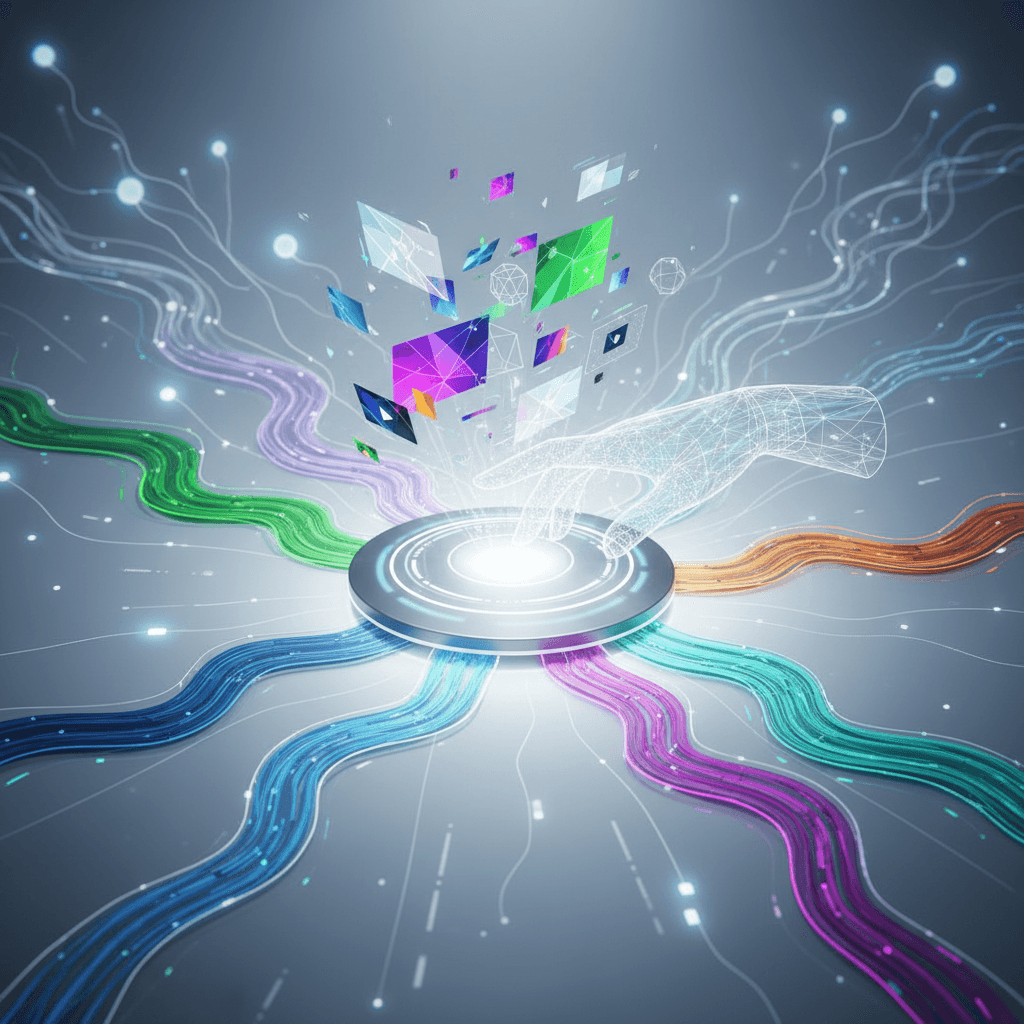Adobe redefines creativity with conversational AI and open third-party models.
Introducing conversational AI and an open multi-model platform, Adobe redefines Creative Cloud as the indispensable hub for creators.
October 28, 2025

In a landmark move signaling a new era for digital content creation, Adobe is fundamentally reshaping its creative ecosystem by embedding conversational AI assistants into its flagship software and opening its ubiquitous Creative Cloud to a host of third-party generative AI models. Unveiled at its MAX 2025 conference, the dual initiatives represent the company's most aggressive push into artificial intelligence, aiming to transform user workflows from complex, tool-based operations into intuitive, language-driven collaborations. By introducing chatbot-like assistants in applications such as Photoshop and Express, and simultaneously integrating premier AI models from partners including Google, OpenAI, and Runway, Adobe is strategically positioning itself not just as a provider of creative tools, but as a centralized platform for an increasingly AI-powered creative industry.[1][2][3][4][5] This pivot addresses the exploding global demand for content by seeking to make powerful editing capabilities more accessible to a wider range of users while giving professionals unprecedented flexibility and choice.[6][5]
The most immediate change for many users will be the introduction of agentic AI assistants within Photoshop, Express, and the Firefly web platform.[7][2][8] These assistants function like conversational partners, allowing creators to execute complex tasks by simply describing their desired outcome in natural language.[2][3] Instead of navigating menus and adjusting sliders, a user can now instruct the assistant to perform a series of repetitive tasks or make stylistic changes, such as "change the background to a sunset and harmonize the lighting" or "make this design more tropical."[4][9] The AI interprets these commands and handles the technical steps, a feature designed to appeal to less experienced users and professionals facing tight deadlines.[7][10] In Adobe Express, the AI assistant can interpret even vague requests like "make this pop," translating subjective feedback into concrete design adjustments by drawing on Adobe's extensive libraries of fonts and stock images, or generating new assets with Firefly.[11][10][9] Adobe also previewed a more advanced concept, codenamed Project Moonlight, which acts as a creative partner that can move across different Adobe apps, learn from a user's assets and social media performance, and proactively suggest ideas for new content.[7][11][12]
Equally significant is Adobe's strategic shift away from a closed ecosystem centered exclusively on its proprietary Firefly AI.[13][5] The company announced an expanded partnership strategy, integrating a suite of premier third-party AI models directly into its creative applications.[1][13] Users will now have the option to choose between Adobe's Firefly models and those from industry leaders like Google (including Gemini, Veo, and Imagen), OpenAI, Runway, Black Forest Labs, Luma AI, and Pika, all within their existing Photoshop, Premiere Pro, or Firefly workflows.[14][15][11][2][13][16][12] This multi-model approach grants creators access to a diverse range of aesthetic styles and specialized capabilities without having to switch between different platforms.[13][17] For instance, the Generative Fill feature in Photoshop can now be powered by Google's models, while new partnerships with ElevenLabs for AI voice generation and Topaz Labs for image upscaling further broaden the available toolset.[11][16][12][18] Adobe has emphasized that this choice will be transparent, with its Content Credentials standard applied to all generated assets, clearly indicating which model was used to create them.[11][13][19]
The implications of these integrations extend deeply into the enterprise sector, where the demand for scalable, on-brand content is immense.[20][21] Through an expanded partnership with Google Cloud, Adobe is enabling enterprise customers to customize Google's AI models using their own proprietary data via a service called Adobe Firefly Foundry.[20][14][15][22] This allows large companies to develop unique, brand-specific AI models for generating high-quality, production-ready content at a massive scale, all while ensuring their data is not used to train the foundational models.[14][15][22][23] The Firefly Foundry service will support the creation of exclusive models across all asset types, including images, video, audio, and 3D.[2][21] This move, combined with enhancements to its GenStudio content supply chain platform, shows Adobe leveraging its entrenched position in professional pipelines to solve the "last mile" problem for businesses that can generate AI ideas but struggle to scale them into brand-safe, high-quality marketing assets.[2][3][21]
In conclusion, Adobe's announcements from MAX 2025 collectively represent a bold reimagining of the creative process. By coupling the intuitive power of conversational AI assistants with the flexibility of an open, multi-model ecosystem, the company is making a decisive play to remain the indispensable hub for all creators, from novices to global enterprises. The new AI assistants promise to democratize complex creative techniques, while the integration of partner models from Google, OpenAI, and others acknowledges a diverse AI landscape and prioritizes user choice.[13][5][10] This strategy not only defends Adobe's stronghold against a wave of nimble, AI-native competitors but also redefines its value proposition: instead of being just a suite of applications, Creative Cloud is evolving into an integrated command center where the world's leading AI innovations can be accessed, managed, and deployed, ensuring Adobe's central role in the future of creativity.[3]
Sources
[3]
[6]
[7]
[10]
[12]
[13]
[14]
[15]
[16]
[17]
[18]
[19]
[20]
[22]